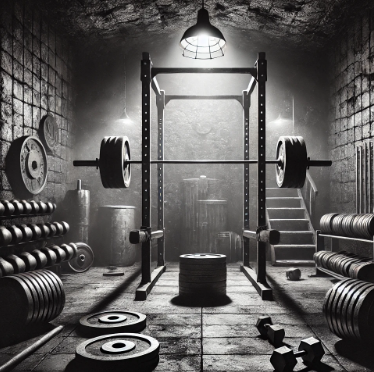Building Bigger Calf Muscles
Published By GainzTracker, 25th September 2024

How to Grow Bigger Calf Muscles
Introduction
Building bigger, stronger calf muscles can be a challenging task for many lifters. The calves consist of two key muscles, the gastrocnemius and the soleus, which are often stubborn to grow due to their daily usage in walking and standing. However, with the right training approach, consistency, and attention to form, you can significantly increase the size and strength of your calves. In this article, we’ll explore the best exercises and tips for developing impressive calf muscles.
Understanding Calf Muscle Anatomy
To effectively grow your calf muscles, it’s essential to understand their anatomy. The calves are composed of two main muscles:
- Gastrocnemius: This is the larger, more visible muscle that gives the calves their rounded shape. It has two heads and is primarily engaged in movements that involve raising the heel.
- Soleus: Located underneath the gastrocnemius, the soleus is a flatter muscle that contributes to the overall thickness of the calf. It is heavily activated during seated calf exercises.
Top Exercises for Calf Growth
To effectively target both the gastrocnemius and soleus, you’ll need to incorporate a combination of standing and seated calf exercises. Here are the best exercises for calf development:
- Standing Calf Raises: This exercise primarily targets the gastrocnemius. You can perform it with bodyweight, holding dumbbells, or using a barbell. Focus on getting a full stretch at the bottom and a strong contraction at the top of the movement.
- Seated Calf Raises: Seated calf raises target the soleus muscle. Use a seated calf raise machine or place weights on your knees while seated to get the full benefit of this exercise.
- Donkey Calf Raises: This old-school bodybuilding favorite involves leaning forward at the waist while keeping your legs straight and performing calf raises. The unique angle provides a great stretch and contraction for the gastrocnemius.
- Calf Press on Leg Press Machine: Using a leg press machine, position your feet at the bottom of the footplate and push through the balls of your feet to perform calf raises. This exercise allows you to use heavy weights safely.
Training Tips for Bigger Calves
Growing your calves requires a strategic approach. Here are key tips to maximize your calf development:
- Prioritize Full Range of Motion: Ensure you’re getting a full stretch at the bottom of each rep and a full contraction at the top. Avoid partial reps, as they won’t fully engage the calf muscles.
- Train with High Frequency: Since the calves are used frequently in everyday movements, they respond well to more frequent training. Aim to train your calves at least 2-3 times a week.
- Vary Your Rep Ranges: Include a combination of heavy, low-rep sets (6-8 reps) and higher-rep sets (15-20 reps) to fully fatigue the muscles and stimulate growth.
- Increase Time Under Tension: Slow down your reps, especially on the eccentric (lowering) phase, to increase time under tension and promote more muscle damage, which leads to growth.
- Use Progressive Overload: Gradually increase the weight, reps, or sets to continuously challenge your calf muscles and encourage hypertrophy.
Sample Calf Workout Routine
Here’s a sample workout designed to target both the gastrocnemius and soleus for maximum calf growth:
- Standing Calf Raises: 4 sets of 10-12 reps (with a 2-second pause at the top and bottom)
- Seated Calf Raises: 3 sets of 12-15 reps
- Donkey Calf Raises: 3 sets of 15 reps
- Calf Press on Leg Press Machine: 4 sets of 8-10 reps (with a slow eccentric phase)
Conclusion
Growing bigger calf muscles requires patience, consistency, and the right combination of exercises. By targeting both the gastrocnemius and soleus, using a full range of motion, and training with progressive overload, you’ll be well on your way to achieving impressive calf development. Stay dedicated to your routine, and don’t forget to focus on recovery to allow your muscles to grow and strengthen.
Call to Action
Ready to grow bigger calves? Incorporate these exercises and tips into your training program, and watch your lower legs transform!
Disclaimer: The information provided in this article is for educational purposes only and is not intended as a substitute for professional medical advice, diagnosis, or treatment. Always consult with a healthcare provider before beginning any exercise program. Use caution when performing exercises to avoid injury.